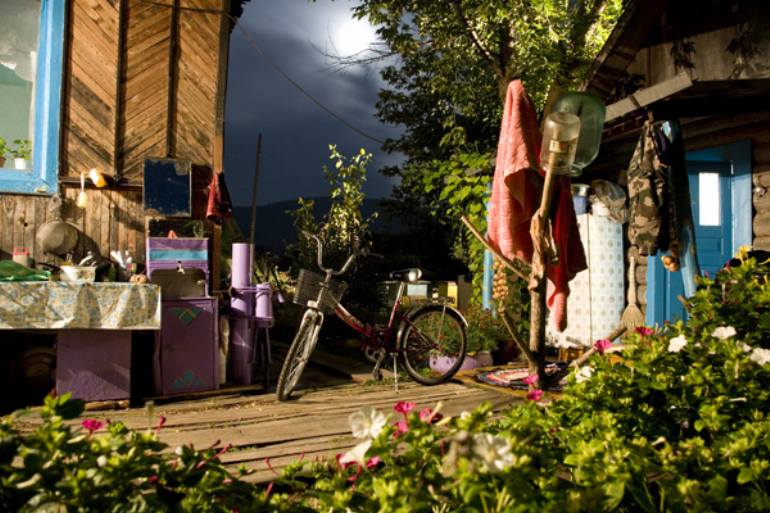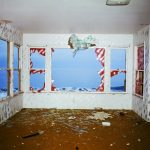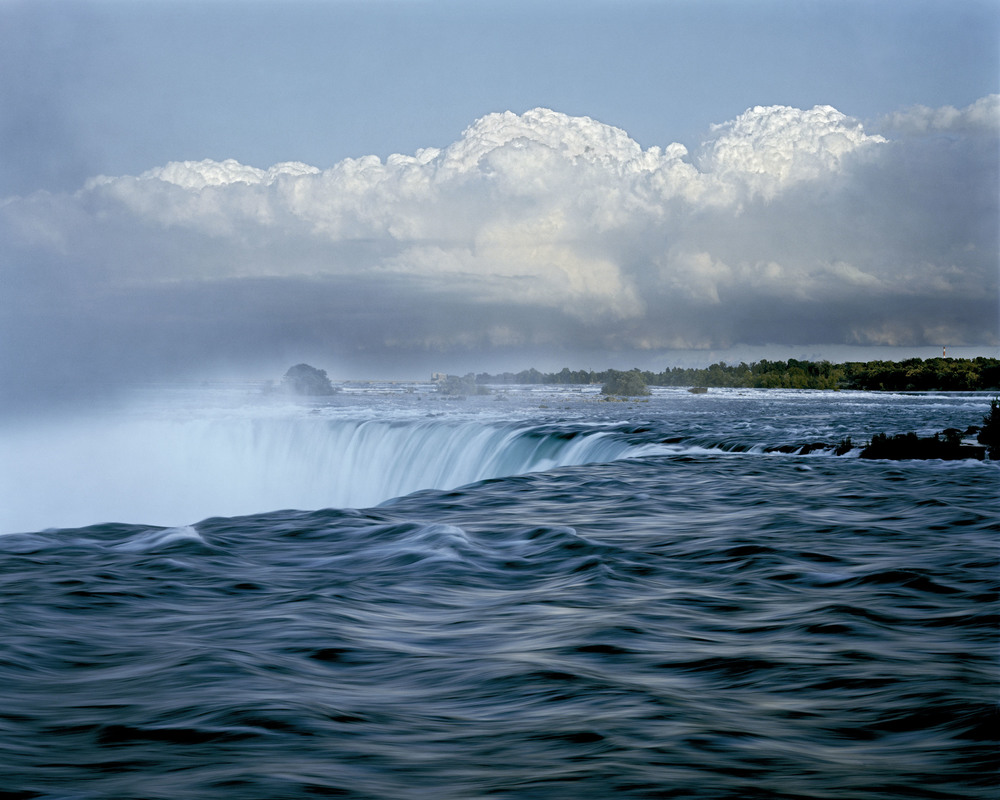Assessment Objectives A2 Photography: (Edexcel)
AO1 – Develop your ideas through sustained and focused investigations informed by contextual and other sources, demonstrating analytical and critical understanding.
To achieve an A or A*-grade you must demonstrate an Exceptional ability (Level 6) through sustained and focused investigations achieving 16-18 marks out of 18.
Get yourself familiar with the assessment grid here:
To develop your ideas further from initial research of mind-maps and mood-boards on the themes ENVIRONMENT you need to be looking at the work of others (artists, photographers, filmmakers, writers, theoreticians, historians etc) and write a specification with 2-3 unique ideas that you want to explore further.
Follow these steps to success!
Research and analyse the work of at least 2-3 (or more) photographers/ artists. Produce at least 2-3 blog posts for each artist reference that illustrate your thinking and understanding using pictures and annotation and make a photographic response to your research into the work of others
- Produce a mood board with a selection of images.
- Provide analysis of their work and explain why you have chosen them and how it relates to your idea and the exam theme of ENVIRONMENT
- Select at least 2 key images and analyse in depth, FORM (composition, use of light etc), MEANING (interpretation, subject-matter, what is the photographer trying to communicate), JUDGEMENT (evaluation, how good is it?), CONTEXT (history and theory of art/ photography/ visual culture,link to other’s work/ideas/concept)
- Incorporate quotes and comments from artist themselves or others (art critics, art historians, curators, writers, journalists etc) using a variety of sources such as Youtube, online articles, reviews, text, books etc.
- Make sure you reference sources and embed links to the above sources in your blog post
- Plan at least 2-3 shoots as a response to the above where you explore your ideas in-depth.
- Edit shoots and show experimentation with different adjustments/ techniques/ processes in Lightroom/ Photoshop
- Reflect and evaluate each shoot afterwards with thoughts on how to refine and modify your ideas i.e. experiment with images in Lightroom/Photoshop, re-visit idea, produce a new shoot, what are you going to do differently next time? How are you going to develop your ideas?
To help you get started look at the starting points in the Exam paper on pages 22-25 under Photography. Look also at other disciplines such as, Fine Art, Graphic Communication, Textile Design, Three-dimensional design – often you will find some interesting ideas here.
Further Contextual References for the above starting points can be found here Contextual References booklet 2017 A2
However don’t just rely on these pages and starting points in the exam paper. Often those students that achieve the highest marks are those that think outside the box and find their own unique starting points.
USEFUL WEBSITES
Lensculture – great source for new contemporary photography from all over the world
British Journal of Photography (BJP) – Journal on Contemporary Photography
Photographic Museum Humanity
World Press Photo – the best news photography and photojournalism
Magnum Photos – photo agency, picture stories from all over the world.
Panos Picture – photo agency
Agency VU – photo agency
INSTITUTE – photo agency
Sputnik Photos – photo collective made of Polish and East European photographers
A Fine Beginning – photo collective in Wales
Document Scotland – photo collective in Scotland
NOOR – a collective uniting a select group of highly accomplished photojournalists and documentary storytellers focusing on contemporary global issues.
Here is a folder EXAM 2017 with a lot of PPTs about varioues genres and approaches to photography: USE IT !!
M:\Departments\Photography\Students\Resources\EXAM 2017
Here are some thoughts from me on different artists whose work makes link and references to the theme of ENVIRONMENT.
Chris Jordan: Midway Message from the Gyre
Definition in dictionary (noun):
| synonyms: | habitat, territory, domain, home, abode;
surroundings, conditions, environs, circumstances
|
| synonyms: | the natural world, nature, the living world, the world, the earth, the ecosystem, the biosphere, Mother Nature, Gaia;
wildlife, flora and fauna, the countryside, the landscape
|
This broad definition encompass almost everything and the obvious approach to thinking about the environment is a place. However the concept of an environment can be interpreted in different ways.
Physical – observed and recorded environment
Psychological – constructed and imagined environment
Using binary opposites we can divide these environment into;
nature/ culture
light/ darkness
east/ west
exterior/ interior
private/ public
masculin/ feminine
During AS Landscape project we explored exactly this is we began by looking at Romanticism in landscape photography as exemplified by Ansel Adams and his contemporaries in Group f/64 and ended up with questioning this overtly idealised monochrome aesthetics with the advent of New Topographics in the mind 1970s – a group of photographers questioning the prevailing monochrome and romanticised aesthetic of depicting nature at it most sublime and beautiful by making images of the urban man-made world.
As A2 students we want you to develop the binary concepts of natural vs man-altered environments and combine this with what you have learned during A2 in terms of documentary and narrative and incorporate your understanding of storytelling and use of archives to enrich your photographic study.
See old blog posts here:
https://hautlieucreative.co.uk/photo16as/2015/12/07/classic-landscape-photography/
Sea / Coast / Marine Environment
In the Photographic Archive at the Society Jersiaise there are significant works by early Jersey landscape and architectural photographers such as Thomas Sutton

Remains of ruined coastal defence tower, Tour du Sud, La Carrière, St Ouen’s Bay, Jersey. Plate from Souvenir de Jersey, published 1854.
Other photographesr in the Photo-Archive who explored Jersey landscapes, topographical views, town, countryside, build-environments etc . Samuel Poulton, Ernest Baudoux, Albert Smith , Edwin Dale, AK Lawson, Paul Martin, Godfray, Frith (put in surnames first for searching online catalogue here.

Gustave Le Gray (French 1820 –1884) was an early pioneer of seascapes.
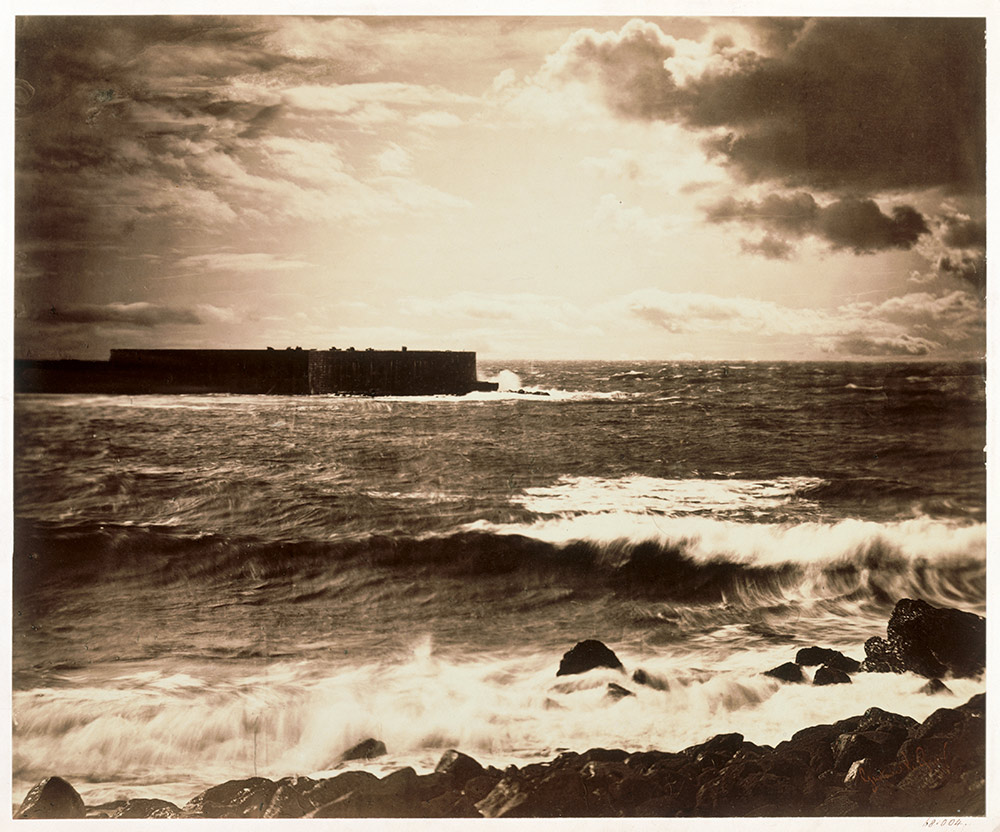
Combination printing, creating seascapes by using one negative for the water and one negative for the sky at a time where it was impossible to have at the same time the sky and the sea on a picture due to the too extreme luminosity range. Combination printing was an early experiment of HDR photography where you expose for bright and dark areas of a landscape scene.
Contemporary approaches to views of horizons between sky and sea, see inspiration from Japanese photographer Hiroshi Sugimoto whose monochrome images are minimalist and spiritual in their expression.
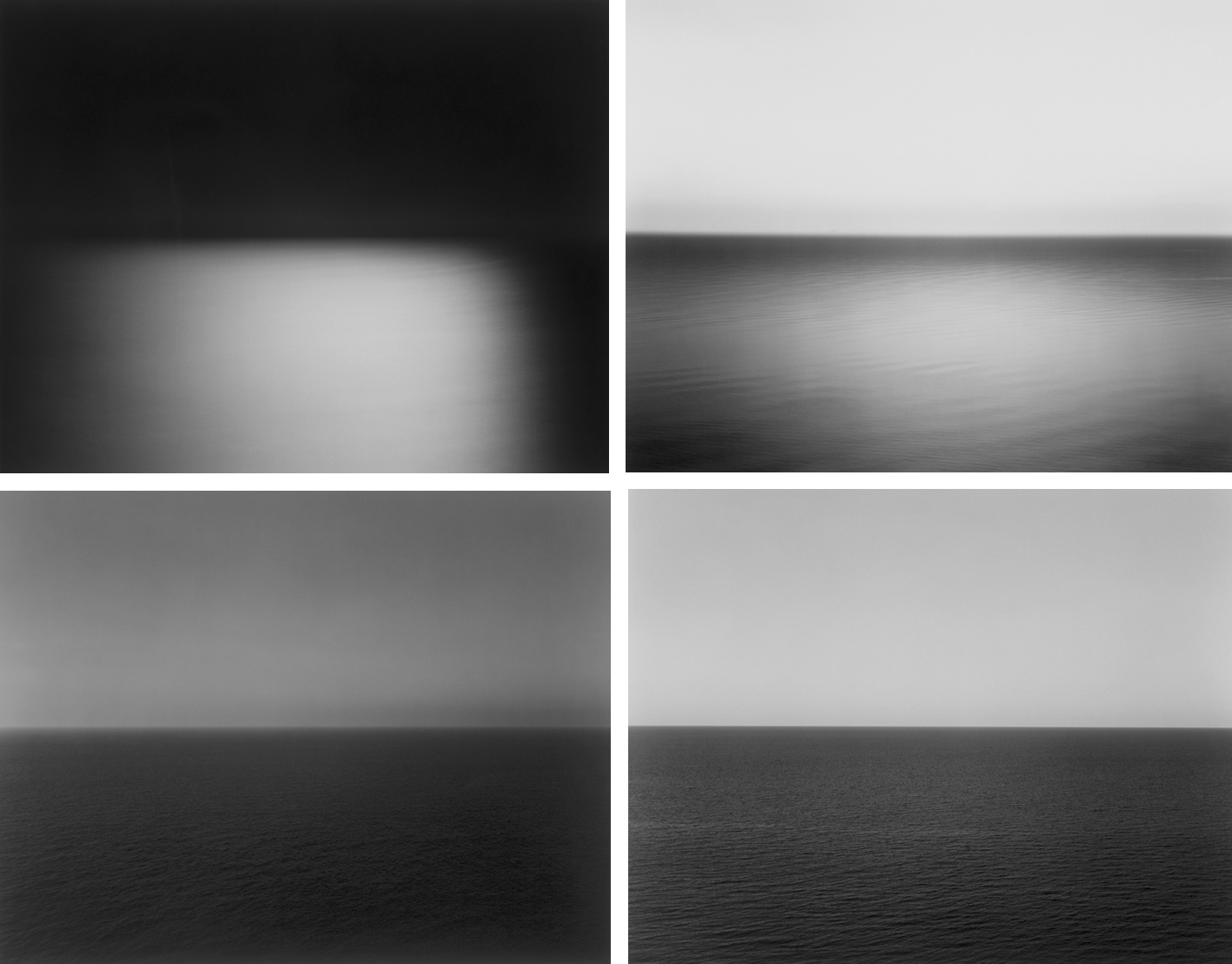
If you intend to explore sea landscapes you must do contextual research in relation to the art movement of Romanticism – see below. Technically you must make images exploring diverse quality of light, expansive views and weather patterns at different times of the day. Make sure to use a tripod, cable release and apply exposure bracketing and experiment with HDR techniques in post-production. Other techniques such as panoramic images and Hockney ‘joiners’ and Typology studies are also appropriate.
https://hautlieucreative.co.uk/photo16as/2015/12/09/contextual-study-romanticism/
https://hautlieucreative.co.uk/photo16as/2015/12/07/photo-assignment-romanticism/
Jersey west coast has unique identity and geography. For many it is place of refuse from work, school and where they go for relaxation, leisure, beach, surfing, walking. If we think about Jersey and an island surrounded by water and with a one of the fastest tidal moments in the world you can look at photographers who has explored the notion of sea or water in interesting ways.
Michael Marten: Sea Change
Excellent use of diptych and triptych and exploring low vs high tides to see how it changes a landscape scene


Mark Power: The Shipping Forecats
Intangible and mysterious, familiar yet obscure, the shipping forecast is broadcast four times daily on BBC Radio 4. For those at, or about to put to sea, the forecast may mean the difference between life and death. In The Shipping Forecast, Mark Power documents the 31 sea areas covered by the forecast,

Subject of water – both studies done on the Thames River in London
Roni Horn: Dictionary of Water
Water is a series of photographs of the surface of the Thames. It is ever-changing: now swirling, now scrunched like black tin foil, now in Turneresque lemon and flame colours, now plucked up into dune shapes. Each is annotated with tiny numbers, which refer to footnotes. The footnotes, hundreds in total, worry away in small type under the images – they happen, in other words, under the surface, and concern what the water suggests and conceals. (“Black water is sexy. / What is water? / What do you know about water? Only that it’s everywhere differently. / Disappearance: that’s why suicides are attracted to it. / You can’t talk about water without talking about oneself. / Down at the river I shot my baby.”)

Archaeological excavations aren’t limited to ancient Egypt or Stone Age villages. In 1999 during the Tate Thames Dig artist Mark Dion and volunteers collected found objects from the river bed and displayed in the cabinets.
Nature as Environment:
In their most recent collection of work, The Meadow, photographers Barbara Bosworth and Margot Anne Kelley explore the connections and relationships formed between humans and the natural world. Over the course of a decade, the two have taken numerous photographs of an area of land in Carlisle, Massachusetts. Combined with Kelley’s writing, the collaborative project resulted in this uniquely-crafted work. The land they have chosen serves as an ideal subject, composed of paths and abandoned farmland reclaimed by the vibrant foliage.
Embodying a diaristic style, the final product has the feeling of a handcrafted scrapbook recollected from someone’s bookshelf. Tucked as if by accident between the pages are small booklets bearing the photographers’ experiences, and the occasional fold-out triptych which embellishes the arts-and-crafts vibe. A detailed appendix documents the numerous foliage, fungi, and pebbles found during the exploration of the meadow. They even transcribe the logs of the previous property owner, who chronicled day-to-day the teeming life he discovered on a series of wooden doors.
link: http://barbarabosworth.com
Finn Larsen, Tracks
Walking 50 km of a train track from one end to another over a 5 year period in different seasons and light recorded the landscape along a track that you ordinary only would see in fleeting glimpses travelling at high speed.
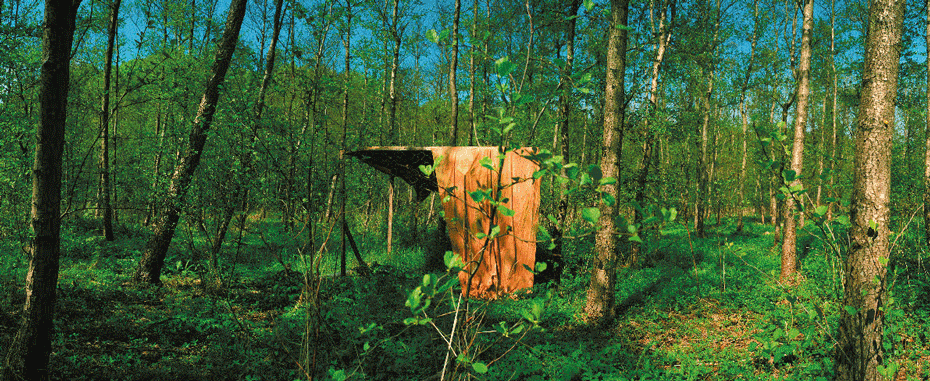

Link to website
Other who has explored nature vs man-made environments within a confined parameters albeit on a much larger scale is Richard Misrach who for decades have photographed the border and desert like terrain between the USA and Mexico. See books Violent Legacies and his latest installment Border Cantos – a multi-faceted approach to the study of place and man’s complex relationship to it in a unique collaboration with composer and performer Guillermo Galindo.

Galindo fashions instruments to be performed as unique sound-generating devices. He also imagines graphic musical scores, many of which also use Misrach’s photographs as points of departure. A unique melding of the artist as documentarian and interpreter, the book will include several suites of photographs drawn from a number of distinct series, or Cantos―some made with a large-format camera as well as an iPhone.
Culture as Environments
Within the history of landscape photography the wild west hold a particular fascination in the minds of early explorers, settlers, scientist and artists. Early landscape photographers include Timothy O’Sullivan, Carleton E. Watkins and William Henry Jackson whose work was a major influence on people like Ansel Adams, Edward Weston and Minor White

In American cinema the advent of the genre, Westerns where frontiers people battle native American indians against a backdrop of sublime Grand Canyon. Another more serene rendition of the American West can be seen in the road movie Paris, Texas by filmmaker Wim Wenders – who also uses photography for location shoots and photographic books.

Others who has explored the unique landscape of the wild west or America’s deep South is John Divola, Robert Adams, Lewis Baltz, Richard Misrach, Ron Jude, William Eggleston
https://hautlieucreative.co.uk/photo16as/2016/01/12/contextual-study-new-topographics/
https://hautlieucreative.co.uk/photo16as/2016/01/15/photo-assignment-social-landscape/
Narrative as Environment
We looked at Alec Soth during the Documentary module as a poetic lyrical story-teller who combines landscapes, portraits, still-lives and other visual material in his photo books.
By way of a follow-up to his critically acclaimed debut monograph Sleeping by the Mississippi (reveals the unique characters and landscapes Soth encountered during a series of road trips along the Mississippi River) Alec Soth turns his eye to another iconic body of water, Niagara Falls. And as with his photographs of the Mississippi, these images are less about natural wonder than human desire. “I went to Niagara for the same reason as the honeymooners and suicide jumpers,” says Soth, “the relentless thunder of the Falls just calls for big passion.”
Using a large-format 8×10 camera like Ansel Adams Soth worked over the course of two years on both the American and Canadian sides of the Falls. He depicts newlyweds and naked lovers, motel parking lots, pawnshop wedding rings and love letters from the subjects he photographed. We read about teenage crushes, workplace affairs, heartbreak and suicide.
Theo Gosselin goes on roadtrip with his friends and make a set of images evoking a cinematic quality

Ron Jude: Lick Creek Line
Lick Creek Line extends and amplifies Ron Jude’s ongoing fascination with the vagaries of photographic empiricism, and the gray area between documentation and fiction. In a sequential narrative punctuated by contrasting moments of violence and
beauty, Jude follows the rambling journey of a fur trapper, methodically checking his trap line in a remote area of Idaho in the Western United States. Through converging pictures of
landscapes, architecture, an encroaching resort community, and the solitary, secretiveprocess of trapping pine marten for their pelts, Lick Creek Line underscores the murky and culturally arbitrary nature of moral critique.
Typology means the study and interpretation of types and became associated with photography through the work of Bernd and Hilla Becher, whose photographs taken over the course of 50 years of industrial structures; water towers, grain elevators, blast furnaces etc can be considered conceptual art. They were interested in the basic forms of these architectural structures and referred to them as ‘Anonyme Skulpturen’ (Anonymous Sculptures.)
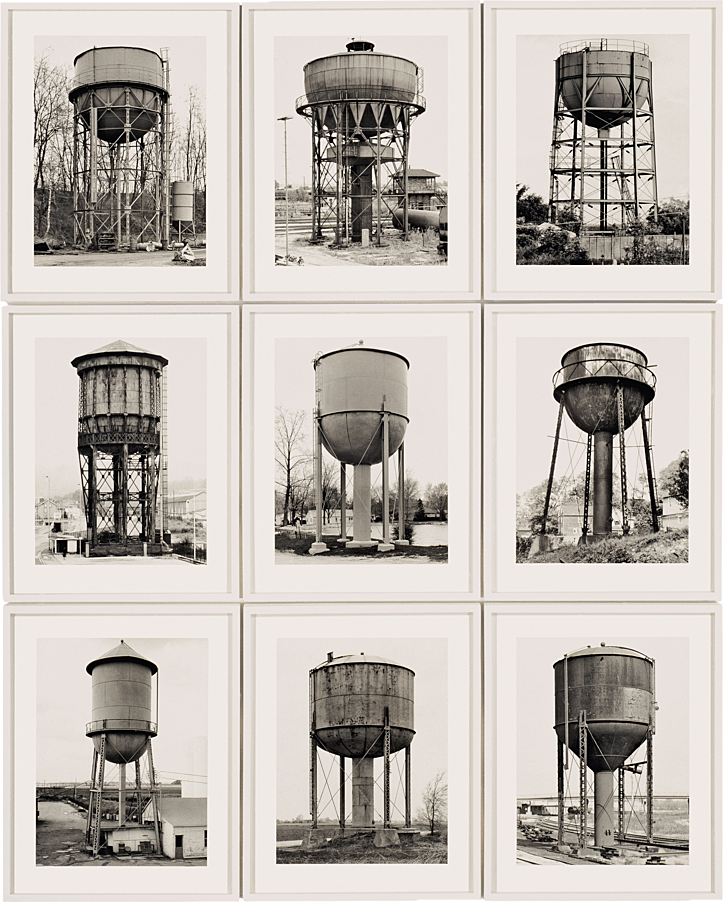
The Becher’s were influenced by the work of earlier German photographers linked to the New Objectivity movement of the 1920s such as August Sander, Karl Blossfeldt and Albert-Renger-Patzsch.
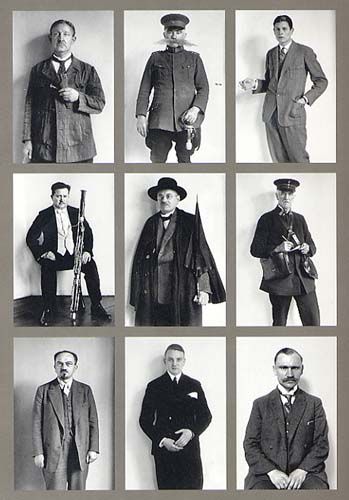


See also the work by Americans, William Christenberry and Ed Ruscha’s photographic works on types e.g. Twentysix Gasoline Stations (1964). Every building on the Sunset Strip (1966). Or Idris Khan‘s appropriation of Bechers’ images.




See previous blog post for more guidelines and a photo-assignment.
https://hautlieucreative.co.uk/photo16as/2016/01/26/experimentation-typology/
Not least of the Bechers’ legacy is their lasting influence on subsequent generations of artists who use the photographic medium today, most notably the students taught by Bernd Becher at the Düsseldorf Art Academy between 1976 and 1996. Among his most renowned students are Andreas Gursky, Candida Höfer, Thomas Ruff, and Thomas Struth.




From Germany, apart form the legacy of the Dusseldorf Kunst Akademie headed by the Becher’s another school of photography, the Werkstatt für Fotografie (Workshop for Photography) was founded in Berlin by Michael Schmidt who invited several leading American photographers, including William Eggleston and John Gossage, to teach there.

Responding to the wall between East and West in Berlin Schmidt produced a seminal work, Waffenrufe. Another body of work Berlin Nach 45 show empty streets of East Berlin made in the early hours as a quite testament to post war German architecture and urban city planning
Conceptual approaches to natural/ man-made environments
Tanja Deman is a Croation artists who will be Archisle’s International Photographer-in-Residence in 2017.
Her art is inspired by her interest in the perception of space, physical and emotional connection to a place and her relationship to nature. Her works, incorporating photography, collage, video and public art, are evocative meditations on urban space and landscape. Observing recently built legacy or natural sites her work investigates the sociology of space and reflects dynamics hidden under the surface of both the built and natural environment.

Fernweh series explores the concept of a modernist city through its extreme relations to the landscape. The images are placed on a blurred line between a past which reminds us of a future and a future which looks like a past. Scenes are referring to the modernist ideas and aspiration of a man conquering the natural wild land and subordinating it to the rational order, and the consequences of those aspirations, which switched into the longing for an escape from urban environments.

Collective Narratives is a series staging a moment of contemplation of nature and built environment. Natural spectacles, framed in theatrical space are contemplated by an audience. These constructed images consolidate: geological formations; a projection of an urban environment; an arena; a deep chasm; a theatre and a crumbling slag-heap through a very active kind of watching.
While making the series ‘Collective Narratives’ I was interested in different types of spectatorship and architectural settings in which they are taking place. Moreover, the notion of a ritual in which a large group of people gathers and participates in order to experience something together by observing, intrigued me. I see these spaces for cultural and sports spectacles, as zones of pure potential, where the world must be rebuilt or re-imagined every time they are in use. Having liberated them from their utilitarian, commercial restrains, and the environments in which they were created, I allow them to cross the boundary of reality.
Together these scenes examine time and the strange modes of spectatorship attached to the inanimate world. A collective witnessing of phenomena that are usually experienced in private atmospheres.
Staged / Constructed Environments
Land art is art that is made directly in the landscape, sculpting the land itself into earthworks or making structures in the landscape using natural materials such as rocks or twigs

Land art was part of the wider conceptual art movement in the 1960s and 1970s. The most famous land art work is Robert Smithson’s Spiral Jetty of 1970, an earthwork built out into the Great Salt Lake in the USA. Though some artists such as Smithson used mechanical earth-moving equipment to make their artworks, other artists made minimal and temporary interventions in the landscape such as Richard Long who simply walked up and down until he had made a mark in the earth.

Land art, which is also known as earth art, was usually documented in artworks using photographs and maps which the artist could exhibit in a gallery. Land artists also made land art in the gallery by bringing in material from the landscape and using it to create installations.

As well as Richard Long and Robert Smithson, key land artists include Hamish Fulton, Walter de Maria, Michael Heizer, Dennis Oppenheim and Christo and Jeanne-Claude
Hamish Fulton (born 1946) is a British walking artist. Since 1972 he has only made works based on the experience of walks.

Read more here on Tate Online Resources
William Christenberry making typological studies of vernacular architecture traditional to the deep American South.
Christenberry also made little sculptures or 3D models of some of the buildings he had photographed
Photography and sculpture
Photographic installations which are site specific and 3-dimensional is very in vogue right now. In the exam paper starting point 4 is about artists exploring the material nature of a photographic image and the idea that photographs can be sculptural. Here are a few artists to explore
Felicity Hammond is an emerging artist who works across photography and installation. Fascinated by political contradictions within the urban landscape her work explores construction sites and obsolete built environments.



In specific works Hammond photographs digitally manipulated images from property developers’ billboards and brochures and prints them directly onto acrylic sheets which are then manipulated into unique sculptural objects. http://www.felicityhammond.com/
Lorenzo Venturi: Dalston Anatomy
Lorenzo Vitturi’s vibrant still lifes capture the threatened spirit of Dalston’s Ridley Road Market. Vitturi – who lives locally – feels compelled to capture its distinctive nature before it is gentrified beyond recognition. Vitturi arranges found objects and photographs them against backdrops of discarded market materials, in dynamic compositions. These are combined with street scenes and portraits of local characters to create a unique portrait of a soon to be extinct way of life.
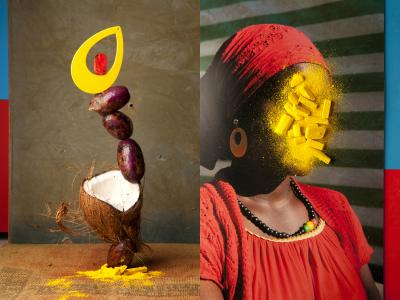

His installation at the Gallery draws on the temporary structures of the market using raw materials, sculptural forms and photographs to explore ideas about creation, consumption and preservation.
Watch our exclusive interview with Lorenzo.
Boyd Webb (born 1947) is a New Zealand-born visual artist who works in the United Kingdom, mainly using the medium of photography although he has also produced sculpture and film. He was shortlisted for the Turner Prize in 1988. He has had solo shows at venues including the Hirshhorn Museum, Washington DC and Whitechapel Art Gallery, London.
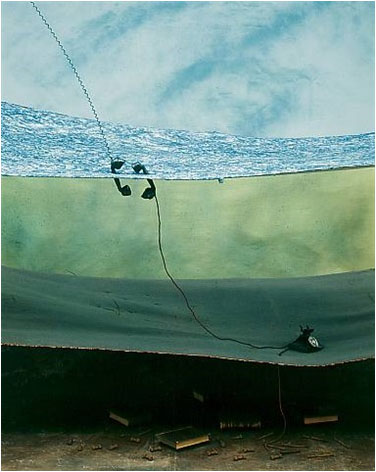
Initially he worked as a sculptor, making life casts of people in fibreglass and arranging them into scenes. He eventually turned to photography and his early work played with ideas of the real and the imagined. Through mysterious and elaborate compositions created using actors and complex sets built by the artist in his studio. In later years his focus shifted to a cool observational style, his work less theatrical and technique less elaborate.
James Casebere pioneering work has established him at the forefront of artists working with constructed photography. For the last thirty years, Casebere has devised increasingly complex models that are subsequently photographed in his studio. Based on architectural, art historical and cinematic sources, his table-sized constructions are made of simple materials, pared down to essential forms. Casebere’s abandoned spaces are hauntingly evocative and oftentimes suggestive of prior events, encouraging the viewer to reconstitute a narrative or symbolic reading of his work.

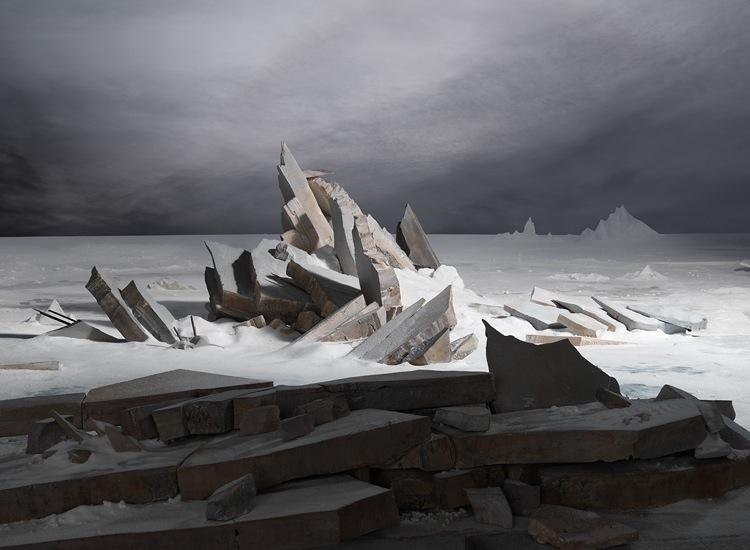
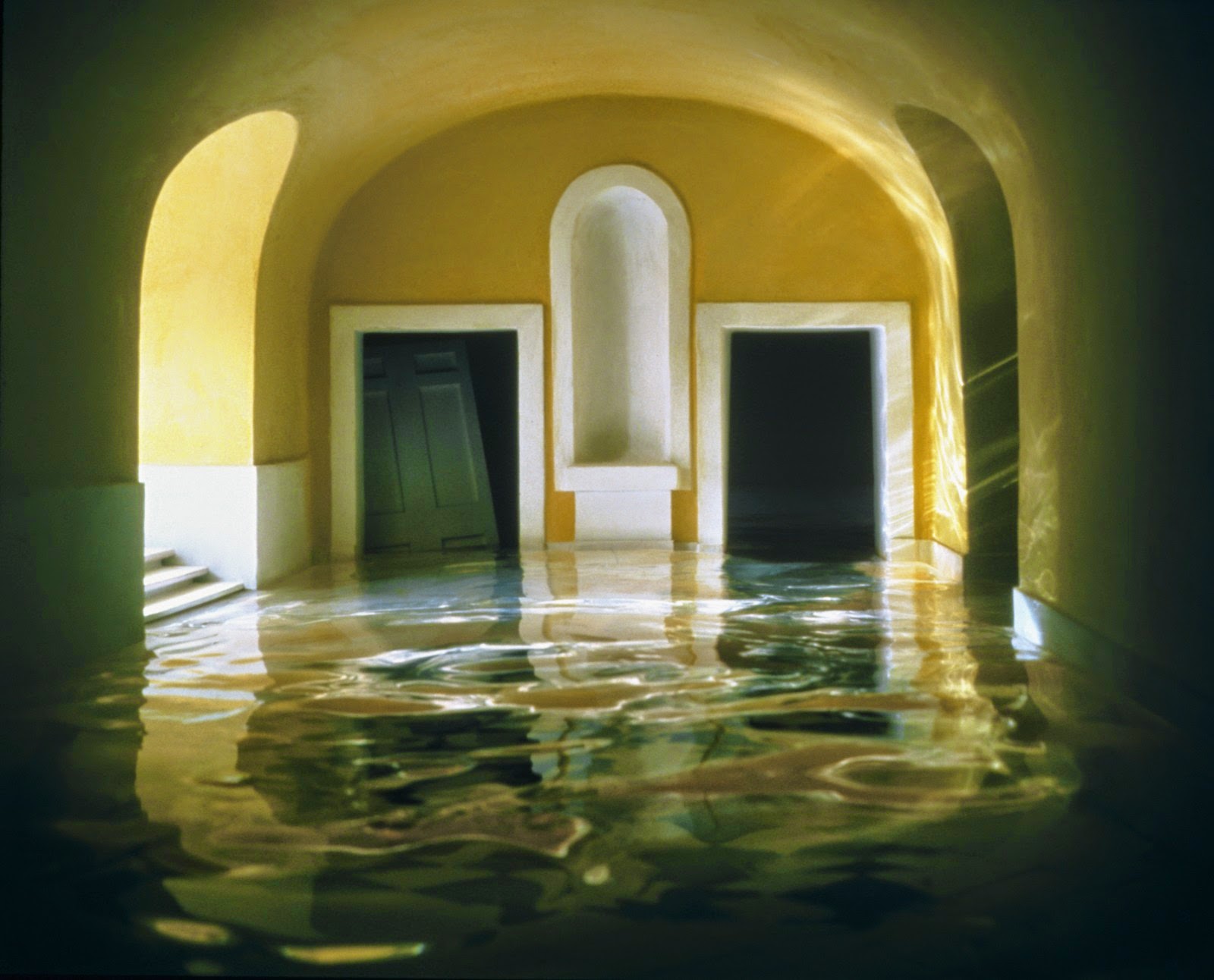

While earlier bodies of work focused on American mythologies such as the genre of the western and suburban home, in the early 1990s, Casebere turned his attention to institutional buildings. In more recent years, his subject matter focused on various institutional spaces and the relationship between social control, social structure and the mythologies that surround particular institutions, as well as the broader implications of dominant systems such as commerce, labor, religion and law.
Thomas Demand studied with the sculptor Fritz Schwegler, who encouraged him to explore the expressive possibilities of architectural models at the Kunstakademie Düsseldorf, where Bernd and Hilla Becher had recently taught photographers such as Andreas Gursky, Thomas Struth, and Candida Höfer. Like those artists, Demand makes mural-scale photographs, but instead of finding his subject matter in landscapes, buildings, and crowds, he uses paper and cardboard to reconstruct scenes he finds in images taken from various media sources. Once he has photographed his re-created environments—always devoid of figures but often displaying evidence of recent human activity—Demand destroys his models, further complicating the relationship between reproduction and original that his photography investigates.
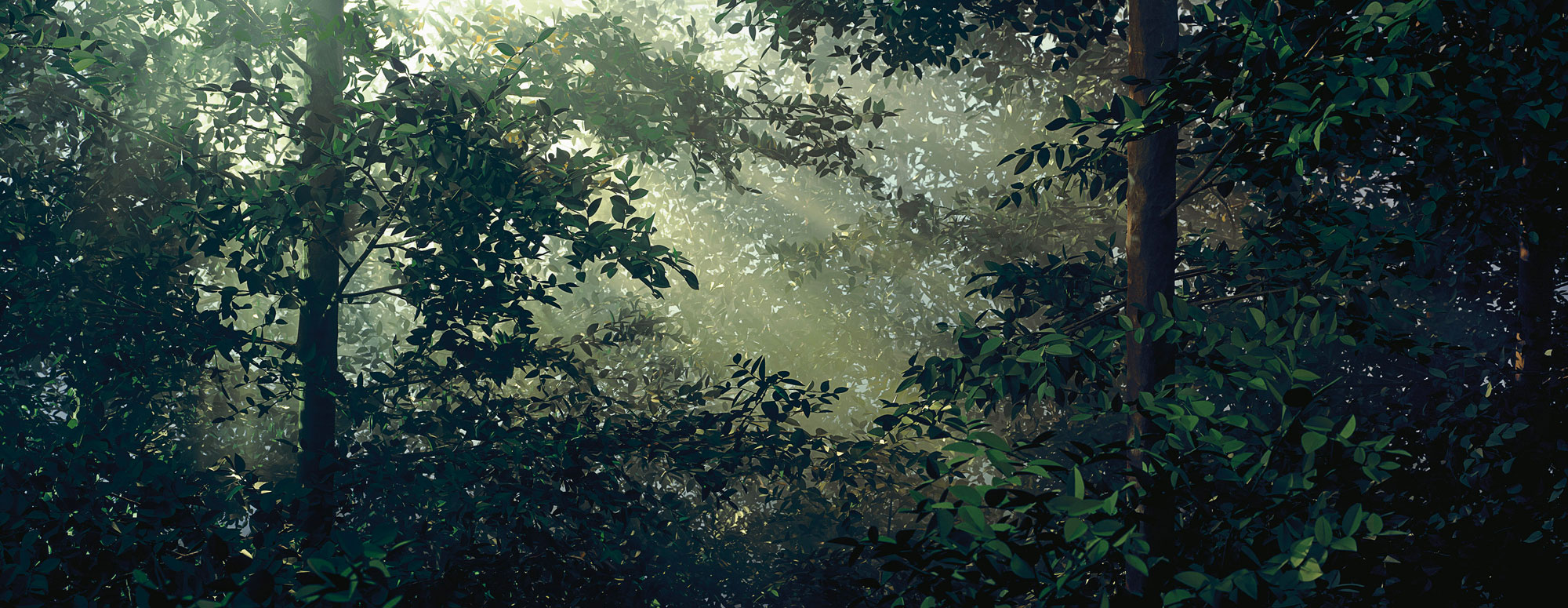
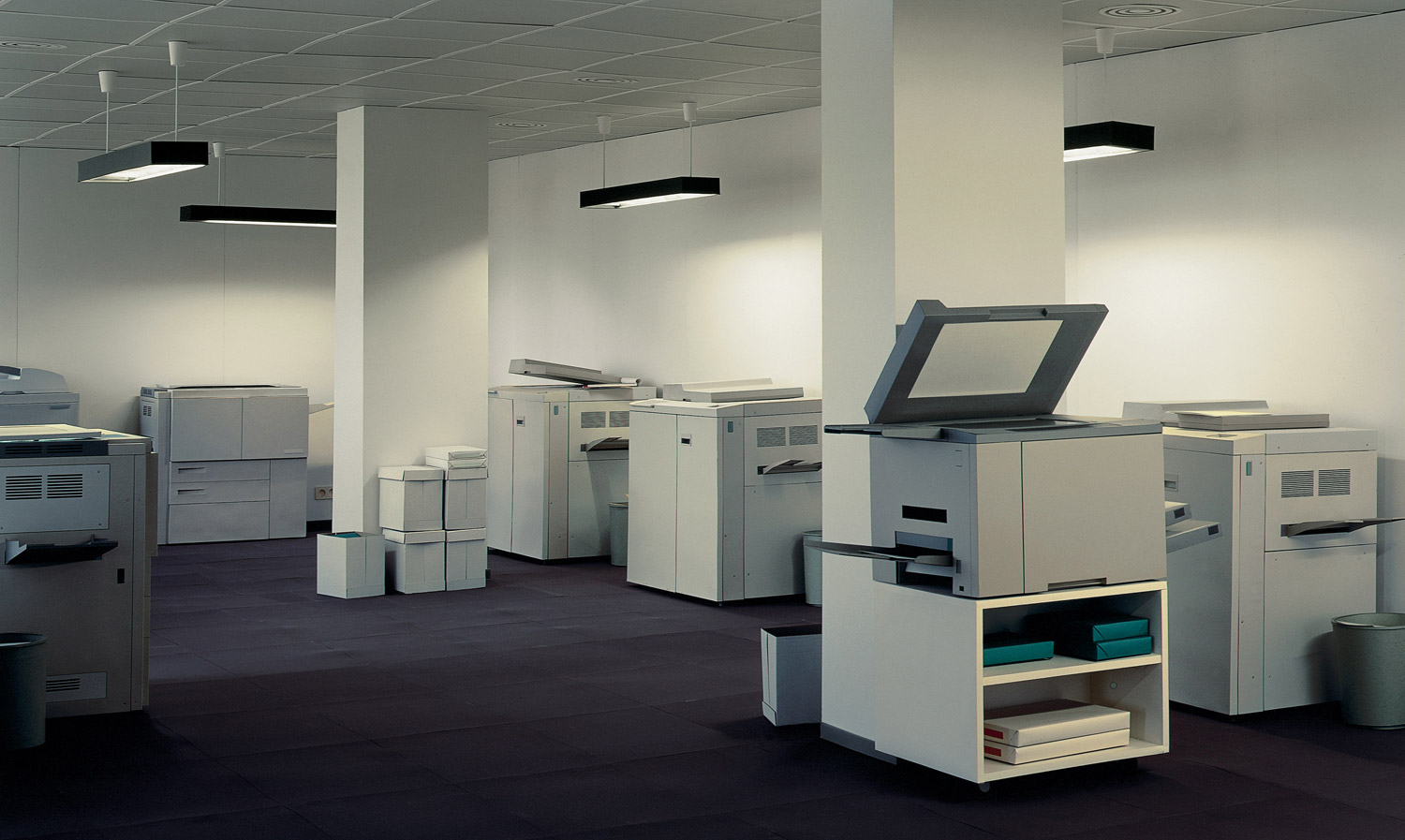
Christian Boltanski (born 1944) is a French sculptor, photographer, painter and film maker, most well known for his photography installations and contemporary French Conceptual style. Boltanski’s subject matters are history and life duration. Vulnerability is his strength, and reflecting upon absence is his way to express his passion for what is real. And so Boltanski builds his own archives, moves shadows around the gallery space, or brings forgotten memories back to the surface through the eyes and faces of strangers that emerge from found photographs; he synchronizes the sound of the human heartbeat to the rhythm of history; he creates settings with old clothing so that individual stories may not be dispersed; he investigates fate and challenges, through irony, the transience of things to propose the art of time.
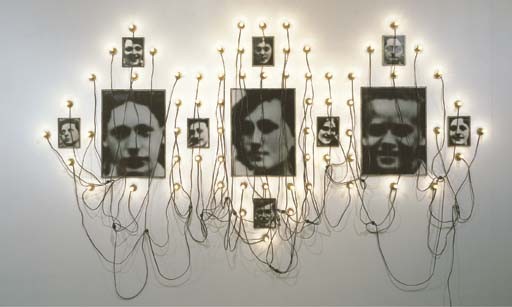


Anette Messenger
Letha Wilson
Marlo Pascual
Environment and Street Photography
Classical approaches between the flaneur (Cartier-Bresson) and confrontational (William Klein) see – previous blog post and ppt here.
Psychogeography – see Tate online resources
Photographic techniques: collage/ montage, Hockney ‘joiners’, panoramic, typology/grids
Within the context of environment lets look at:
Eamon Doyle – Dublin Trilogy
Richard Wentworth vs Eugene Agtet
Michael Wolf
Peter Bialobrzeski: Cairo Diaries
Kyler Zeleny: Out West
John MaClean: Two and Two, Hometown, New Colour Guide
Lee Friedlander: America by Car
Antonio Olmos: The Landscape of Murder
Jason Larkin: Waiting
Christopher Anderson: Capitolio
Capitolio is New York documentary photographer Christopher Anderson’s cinematic journey through the upheavals of contemporary Caracas, Venezuela, in the tradition of such earlier projects as William Klein’s New York (1954-55) and Robert Frank’s The Americans (1958). It presents a poetic and politicized vision, by one of today’s finest documentary photographers, of a city and a country that is ripping apart at the seams under the stress of popular unrest, and whose turmoil remains largely unreported by Western media.
Abstraction with a city environment:
Saul Leiter
Ernst Haas
Nagoya Hatakoeyama: River Series
Stephen Gill: Talking to Ants, other projects
Siegfried Hansen: Hold the Line
Antonio M. Xoubanova: A Small Universe
A Small Universe is my imagining of the universe in 2.5 seconds and 10 linear metres of street.” “The project is a 2.5-second-long feature film comprised of images and sequences which reference the beginning of things – technology, religion, the universe, the street, love, matter and its different forms, the basics of the human condition, contemporaneity, advertising and the end of existence.” “The images in the book represent a space according to their size; they are containers of time. An image captured at 1/40 second shutter speed is physically 10 times larger than another shot at 1/400 second. The size of each image is determined by the amount of time it contains. The book is therefore an attempt to materialize something as minimal, abstract and complex as 2.5 seconds of existence – a fragment of matter, or a small space.” “If the universe is defined as the total sum of all matter, time and space, this book of “street photography” is the attempt to address a controlled universe and the elements it contains, which in the end reveal themselves to be complex and uncontrollable.”
Focusing on people, faces and private space
Satoshi Fujiwara: Code Unknown
City or nature at twilight/ night
Awoiska van der Molen: Sequester
Christen Lebas: Blue Hour
Todd Hido
Rut Blees Luzembourg
Bill Henson
Maciej Dakowicz: Cardiff After Night
Richard Renaldi: Tales of a City
Ken Schles: Night Walk
Chris Shaw: Life as a Night Porter (link to Sophie Calle)
Oscar Monzón: Karma – takes a voyeuristic look through the car window.
Case-study: Environment as one site
Anders Petersen: Cafe Lehmitz
Krass Clement: DRUM
Klaus Pichler: Golden Days before they End
Andrew Miksys: Disko
Ciaran Og Arnold: I went to the worst of bars…
Environment as a Personal or Psychological space
Cindy Sherman: film-stills
– image hanging of door – girl who committed suicide
Claude Cahun
Elina Brothers
Patrick Willocq
Anne Hardy
Robert Frank – recent work such as his trilogy: You Would, Park/Sleep and Ta UF, Tal AB
staged environments (tableaux)
Tom Hunter, Jeff Wall, Gregory Crewdson, Duane Michaels, Sam Taylor Johnson (former Sam Taylor-Wood), Hannah Starkey, Tracy Moffatt, Vibeke Tandberg
Environments for animals:
Raymond Meeks: Animal Shelter
Nico Baumgarten: How the Other half lives
Christopher Nunn: Ukranian Street Dogs
Gary Winograd: The Animals
Documentary vs Staged Photography
If we examine documentary truth (camera as witness) versus a staged photograph (tableaux photography) all sorts of questions arise that are pertinent to consider as an image maker. Remember our discussion we had at the beginning of September when we began module of Documentary and Narrative. We discussed a set of images submitted at the World Press Photo competition on 2015.
Tableaux Photography and the Staged photograph
Tableaux photography is a style of photography in which a pictorial narrative is conveyed through a single image as opposed to a series of images which tell a story such as in photojournalism and documentary photography. This style is sometimes also referred to as ‘staged’ or ‘constructed photography’ and tableaux photographs makes references to fables, fairy tales, myths and unreal and real events from a variety of sources such as paintings, film, theatre, literature and the media. Tableaux photographs offer a much more ambiguous and open-ended description of something that are subjective to interpretation by the viewer. Tableaux photographs are mainly exhibited in fine art galleries and museums where they are considered alongside other works of art.
Tom Hunter, Jeff Wall, Gregory Crewdson, Duane Michaels, Sam Taylor Johnson (former Sam Taylor-Wood), Hannah Starkey, Tracy Moffatt, Vibeke Tandberg, William Wegman.


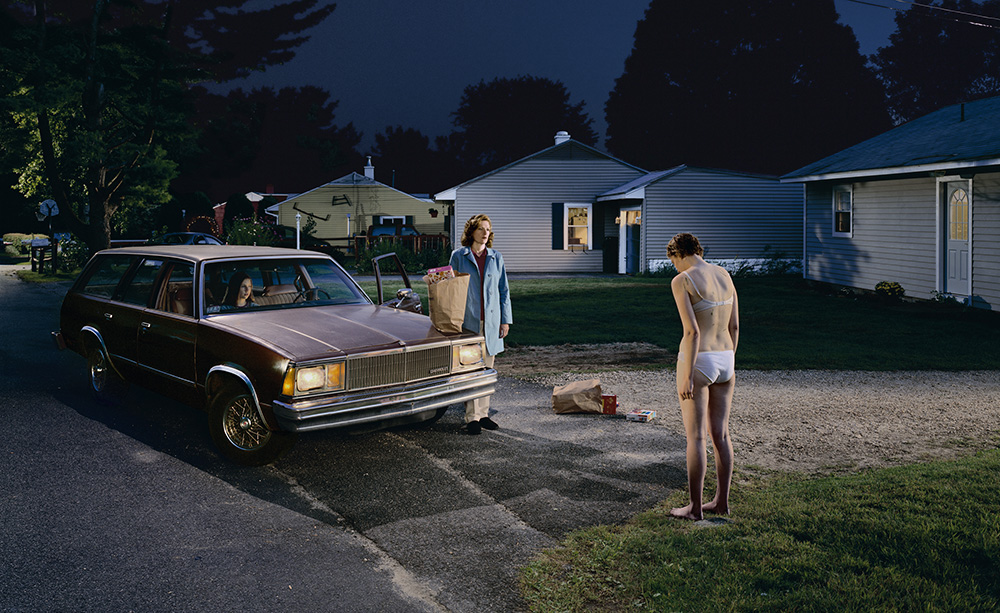
Watch video behind the scenes of Gregory Crewdson shoot





See my PPT om Tableaux Photography for more details
Mishka Henner, Trevor Paglen, Doug Rickard, Daniel Mayrit all use found images from the internet, Google earth and other satellites images as a way to ask questions and raise awareness about our environment, state operated security facilities, social and urban neighbour hoods, prostitution, and London’s business leaders of major international financial institutions.

US oil fields photographed by satellites orbiting Earth.

Mishka Henner: I’m not the only one, 2015
Single channel video, 4:34 mins
Photographer Trevor Paglen has long made the advanced technology of global surveillance and military weaponry his subject. This year he has been nominated for the prestigious The Deutsche Börse Photography Foundation Prize which aims to reward a contemporary photographer of any nationality, who has made the most significant contribution (exhibition or publication) to the medium of photography in Europe in the previous year. The Prize showcases new talents and highlights the best of international photography practice. It is one of the most prestigious prizes in the world of photography. Read more here

Doug Rickard is a north American artist / photographer. He uses technologies such as Google Street View and YouTube to find images, which he then photographs on his monitor, to create series of work that have been published in books, exhibited in galleries.
Months after the London Riots in 2008 (at the beginning of the economical crash) the Metropolitan Police handed out leaflets depicting youngsters that presumably took part in riots. Images of very low quality, almost amateur, were embedded with unquestioned authority due both to the device used for taking the photographs and to the institution distributing those images. But in reality, what do we actually know about these people? We have no context or explanation of the facts, but we almost inadvertently assume their guilt because they have been ‘caught on CCTV’.
In his awarding book: You Haven’s Seen the Faces.. Daniel Mayrit appropriated the characteristics of surveillance technology using Facebook and Google to collect images of the 100 most powerful people in the City of London (according to the annual report by Square Mile magazine in 2013). The people here featured represent a sector which is arguably regarded in the collective perception as highly responsible for the current economic situation, but nevertheless still live in a comfortable anonymity, away from public scrutiny.
Read article here in the BJP on Shooting the Rich
Read and see more here on his website and the publisher, RIOT Books
See also this book Looters by Tiane Doan Na Champassak
Photography and Performance
Tableaux photography always have an element of performing for the camera and the exam themes lend themselves really well to revisit Performance in Photography and explore fantasy, fiction, parody, alter-ego, identity etc. Read my blog post from last Summer when we were exploring Tom Pope’s practice in Photography and Performance and the themes of Chance, Change and Challenge . You should be able to find some starting points here
For example, write a manifesto with a set of rules (6-10) that provide a framework for your performance related project. Describe in detail how you are planning on developing your work and ideas. Think about what you want to achieve, what you want to communicate, how your ideas relate to the themes of Truth, Fantasy or Fiction and how you are going to approach this task in terms of form, technique and subject-matter.
A list of art movements that you may use as contextual research. Many of them also produced Manifestos:
Dadaism, Futurism, Surrealism, Situationism, Neo-dadaism, Land/Environmental art, Performance art/Live art, Conceptualism, Experimental filmmaking/ Avant-garde cinema (those studying Media make links with your unit on Experimental film)
Here are a list of artists/ photographers that may inspire you:
Vito Acconci, John Baldessari, Yves Klein, Bas Jan Ader, Erwin Wurm, Chris Arnatt, Richard Long, Hamish Fulton, Joseph Beuys, Chris Burden, Francis Alÿs, , Sophie Calle , Nikki S Lee, Claude Cahun, Dennis Oppenheim, Bruce Nauman, Allan Kaprow, Mark Wallinger, Gillian Wearing, Marcel Duchamp and the Readymade, Andy Warhol’s film work, Steve McQueen, Sam Taylor-Johnson, Marina Abramovic, Pipilotti Rist, Luis Bunuel/ Salvatore Dali: , Le Chien Andalou, Dziga Vertov: The Man with a Movie Camera
images
Photography and Sculpture:
Images produced through transformation of materials and making things to be photographed. See work by: Lorenzo Vitturi (Dalton Anatomy), Thomas Demand, James Casebere (see Emily Reynolds work), Vik Muniz, Chris Jordan (Midway Atoll), Stephen Gill.
For those interested in exploring identities, stereotypes, gender, alter-egos through self-portraiture using varies techniques such slow shutters-speeds, use of dressing up, make-up, props, masks, locations (mine-en-scene) Often these images are questioning ideas around truth, fantasy or fiction.
Francesco Woodman, Cindy Sherman, Claude Cahun, Yasumasa Morimura, Gillian Wearing, Sean Lee (Shauna) Juno Calypso
Stranger than Fiction: Should documentary photographers add fiction to reality?
Documentary photography belongs to the realm of truth, yet some photographers are testing the boundaries between reality and fiction in a bid to reach a public that is accustomed to these narrative forms in the literary and cinematic worlds. In contemporary photography today your have what some people call Fictional Documentary (similar to TV genre such as doc-drama) where you interpret real or historical events through fiction. This is often expressed through a personal and artistic vision which are operating somewhere between fiction and fantasy with some elements of truth or historical data that has been re-imagined.
See the work of: Cristina de Middel (Afronauts, Sharkification, This is What Hatred Did), Max Pinckers (Will They Sing Like Raindrops or Leave Me Thirsty), Vasantha Yogananthan (A Myth of Two Souls), Ron Jude (Lick Creek Line), Eamonn Doyle ( i ) Paul Graham (Does Yellow Run Forever), Yury Toroptsov (Fairyland, House of Baba Yaga, Divine Retribution), Gareth McConnell (Close Your Eyes), Joan Fontcuberta







